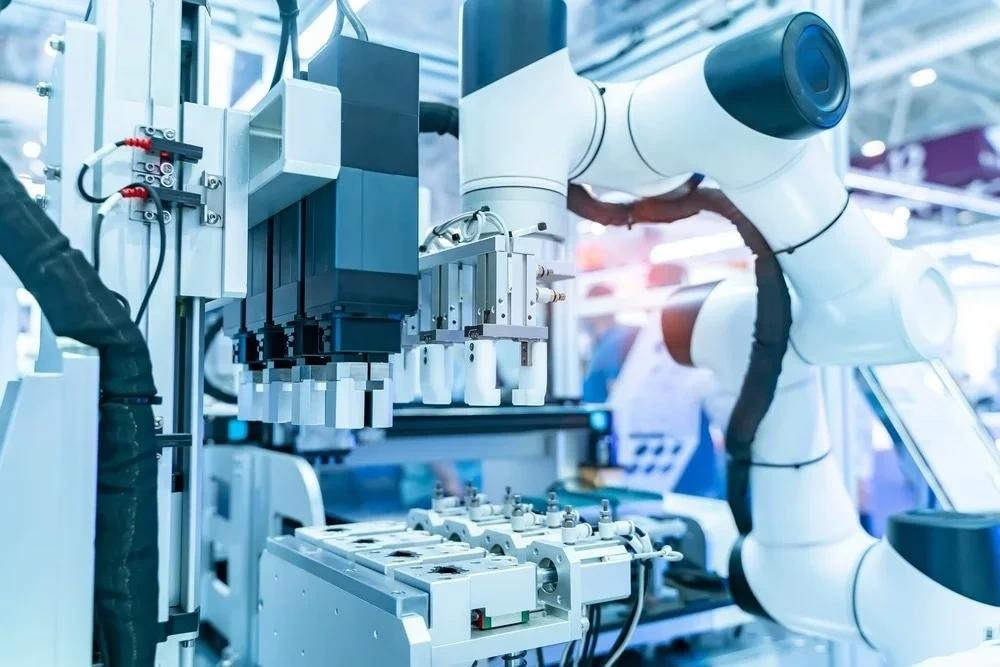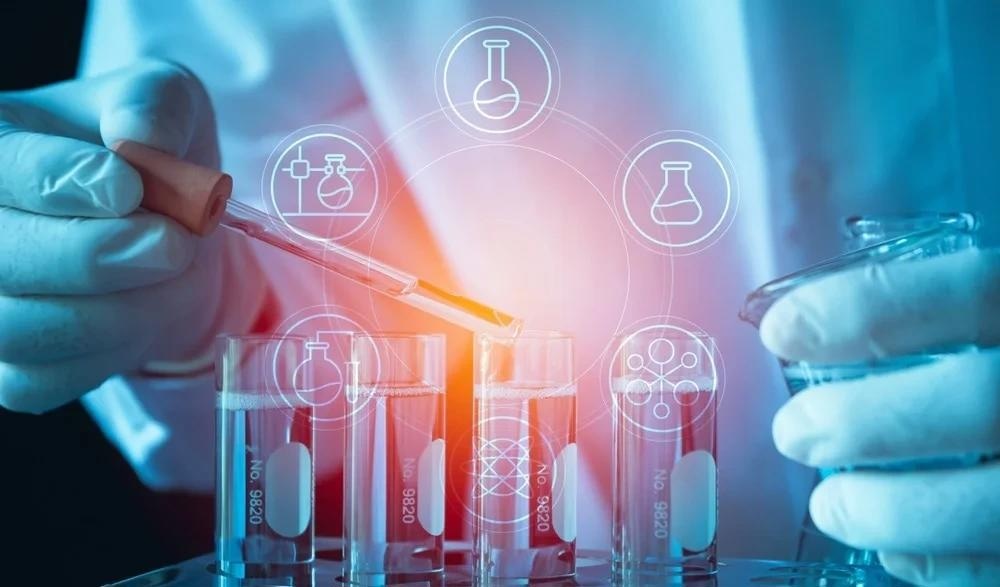Please introduce yourselves and tell us a bit about your engineering and manufacturing automation background?
Peter Oberst:
My name is Peter Oberst, Director of Applications, and I have been in this industry for nearly 40 years, the last 30 or so in the medical device sector. My role at Ascential Medical & Life Sciences is to collaborate with the applications group. We manage new equipment projects and balance risk versus value for our clients by wrapping the business objectives around the technical requirements to create a robust solution for our customers.
Bill Tranberg:
I am Bill Tranberg, the Director of Controls Engineering. I am responsible for the group handling electrical design and programming for automation, motion control, robotics, machine vision, data collection, and related areas. I have been with the organization for 12 years and in machine building for almost 32 years.
John Gion:
I am John Gion, the Director of Mechanical Engineering at Ascential Technologies. I have been in the industry for about 40 years. My primary responsibility is overseeing the mechanical engineering group. We handle the process development for automation, as well as machine design development and documentation.
Erol Erturk:
My name is Errol Erturk, and I am the Vice President of Engineering and Product Development for Life Sciences. My team develops the instruments and designs consumables for automation applications.
What are some trends in performance testing and related tools? Is there any increased scrutiny in this domain? Can you give us some examples of what you are seeing in this area?
Peter Oberst:
In medical device and pharma, it all starts with a company's requirement specification. The users develop these specifications to determine the targeted manufacturing performance.
We start with these requirements and create other design documents that follow our proven design and machine development process. It all ends up together in what we would call a factory acceptance test, where the client would come in and measure the machine's performance against their requirements.
This is an event that takes on different forms depending on which customers we are dealing with, but the major change that I have seen over the last 10 years or so is that instead of one project manager or project engineer coming out to assess the machinery, now the customer's manufacturing a quality team is much larger and more specialized.
Each has their specialty, and each has their area that they are checking to verify the machine works according to their input requirements. This is probably the biggest change I have seen over the last few years.
John Gion:
As we advance further into the information analysis of medical manufacturing, the necessity for condensing that information into useful outputs has also become important. While the clients preferred offline data sampling before, they are now shifting it online and wish to have continuous feedback.
Not only do we see increased need and opportunity for continuous feedback on the machine, but also with the associated systems and accessibility of data, which means now additional controls need to be addressed.
Bill Tranberg:
The evaluation and checkout of a system is not just a singular event anymore. It is ongoing, not just in overall performance, but in a very granular way for different sections of the machine system. This data is generated almost continuously, and once it is generated, we have to find ways of visualizing it coherently so that people can obtain useful information from it.
 Image Credit: asharkyu/Shutterstock.com
Image Credit: asharkyu/Shutterstock.com
What is the effect of the increasing interest in robotic technologies, machine vision, and camera systems on simulation capabilities?
John Gion:
Regarding the trend toward robotics, I will say that re-use and modularity are areas for simulation testing and enable a faster turnaround in bringing manufacturing equipment and automation systems online. Modularity, robotics, and vision systems on a common platform are all enablers of bringing that to light. It also allows for a more universal platform.
It is challenging to have a simulation of a pick-in-place, but the technologies are now there to bring the machine together, to bring that simulation into a whole-cloth simulation rather than just the simulation of individual devices. This plays a significant role, not just in the mechanical deployment of the equipment, but also in the testing and verification of the equipment and entire system.
Bill Tranberg:
Simulation has an impact along the whole lifecycle. During development, simulation enables us to conduct testing before we have a physical machine in front of us, and we can test concepts and vet ideas that way. Even after a machine becomes complete or goes online, simulation of that same machine, a digital twin, can enable us to make iterative improvements and test specific situations without disturbing production.
Are customers leaning toward advanced robot systems over basic pick-and-place machines, and what role does 3D vision play in this trend?
Bill Tranberg:
Robots come in handy in a custom environment because the companies we work with need things relatively quickly, have a high degree of complexity or tight tolerances, and they need to be flexible. The flexibility of a robot is one of its advantages, and we can always build a pick-and-place out of discrete components, but it is pretty limited in its abilities.
The capabilities continue to improve, and we utilize it for scenarios like profiling quality inspection. In conjunction with robotics, we use 3D vision to navigate parts that may be different every time they run through a machine.
We have worked with challenges where we are not making thousands or millions of one single thing, but rather, bespoke parts that may be different every time they are made. 3D vision lets us build an automatic system that can easily adapt to whatever the product requirements are.
John Gion:
It may be a simple observation, but 3D vision allows us to combine inspections. Imagine placing a component; in prior applications, you would need to verify that the component was placed and then have some measurement device to confirm that it was placed correctly.
With 3D vision, you get all of that in one shot. You take the image, know that it is there, and know that it is in the right place, seated correctly, or oriented correctly. These aspects come in a single package now, which is helpful for increasing throughput and reducing the footprint to minimize space requirements.
[Podcast] Staying Ahead of Manufacturing Automation Trends in 2024
Are newer manufacturing and robotic technologies ready for the demanding conditions of industries such as medical device manufacturing and life sciences?
Bill Tranberg:
I think it is a very relevant question regarding AI and machine learning, not just in their capabilities but also in how the entire process works. Anything implemented in the medical sector needs to be a validated system. The nature of AI is that it adapts and changes.
The challenge: How do you validate that, and how do you maintain that validation if the machine's logic itself can evolve? This is going to be an interesting challenge. The technology is ready, and it certainly adds a lot of capability.
Erol Erturk:
In the medical world, the OQ, IQ, and PQ validation processes will only be enhanced by having more automatable inspection capability, where you can verify the actual specifications of the consumable.
The FDA cares about verifying the specifications and tracing them back to the requirements. More tools, such as AI, will only make it more effective. These tools have to be reliable, but I think we are at a stage in the industry that the bugs and error cases in AI based tools can be effectively worked out.
Can you explain the benefits that AI and machine learning offer to inspection and process development technologies?
Bill Tranberg:
In the context of machine vision, machine learning-based systems have helped conduct inspections that may not cleanly translate into very discreet tools. The vision system has always been effective when one can zone in on one area and measure it, count pixels, and recognize the pattern. However, if the inspections are slightly more subjective, that has been difficult.
With machine learning, you can put 100 good parts and 100 bad parts in front of it. It is going to make those associations to be able to distinguish between a failure and a passing product.
It will also be helpful with things like predictive maintenance, where a system will track various performance parameters of devices or an entire system over time and detect disturbances or even some degradation of a parameter to anticipate a failure before it physically happens. Allowing maintenance to be planned and scheduled, minimizing downtime and optimizing ROI.
John Gion:
AI and machine learning have also been helpful in the process development world can assist in identifying the associations that we would not necessarily pick up on when making the correlations about how the process is supposed to work and understanding the inputs and the outputs.
These relations do not always work out, but they point you in the direction of things not considered before, allowing for more advanced process improvements and optimization.
Erol Erturk:
The important areas for us are data management and the connectivity of the produced data. For example: it may be essential to link an individual patient's sample to a specific machine/instrument, where a patient sample, identified by a barcode, can be tracked through the machine. The logs of these results are kept and uploaded, which is very important for analysis.
Smarter analysis techniques through AI are also necessary for analyzing equipment/machine health, determining false positives and false negatives, and minimizing those errors. These aspects are very important for manufacturers of medical consumables and devices.
We have to collaborate more between our automation processes and the equipment/machine to be able to handle and manage the data and present it properly. At the application level, smart imaging analysis is readily available. It is being done at the molecular level, at the tissue level, and spatial genomics. This is only going to get more important.
What is the biggest theme or trend in manufacturing automation in 2023, compared to 2022, that you anticipate will continue to grow?
Bill Tranberg:
Data collection is important, not just in what you can collect but also in determining what you do not need to collect. Identifying relevant data points and bringing them all together into something coherent is continuously being developed.
Erol Erturk:
I would agree with analytics. Data is available now, and powerful tools are available to analyze it.
The other trend is the high number of therapies, tests, and technologies being developed for cancer, some other specific disease, or to better understand a biological specimen. This means that the number of consumables and the chemistries that need to be automated are also growing, and they are all over the map.
Being able to look at designs and make them standard or understanding what tools can be used to test and produce them is only going to be more important going forward.
Many scientists, not just in our universities but all around the world, are doing incredible stuff that will end up in some ideally automated consumable so that no hands are touching it. This will be aseptic, and sterile, and will go right to the patient, the doctor, or the scientist's hand just when they need it.
 Image Credit: Krisana Antharith/Shutterstock.com
Image Credit: Krisana Antharith/Shutterstock.com
John Gion:
One of the ongoing trends is the development of therapies. Some of these therapies are tailored to individual patients. The days of it being, "All right, I have one therapy that applies to the full marketplace of people that are going to consume it" are over.
On the automation side, we observe that the batch sizes are becoming smaller, and there is a growing desire to tailor devices to particular patients. I anticipate this trend will persist, emphasizing the need for robust traceability and ensuring a higher level of accountability than merely tracing a batch.
Peter Oberst:
I am going to take a more macroeconomic approach to your question. Lately, I have been noticing, and I believe others in our industries have as well, that onshoring or nearshoring of these types of manufacturing processes is becoming more important. Automating the manufacturing process addresses challenges in transferring manufacturing from low cost labor sectors, while improving quality.
Given the current geopolitical landscape, supply chain challenges, and uncertainty about what might happen next, I am seeing a trend where customers are bringing the manufacturing of medical device and life science products back into North America. I think we will see more of this trend in our markets.

 Watch the full on-demand podcast
Watch the full on-demand podcast
About Ascential Medical & Life Sciences
Ascential Technologies, designs, develops, and automates complex diagnostics, inspection and test processes across medical & life sciences, transportation, and specialty industrial end markets.
The company tackles customers’ most demanding, mission-critical challenges where the cost of failure is high. With more than 70 years of innovation experience, Ascential has a global presence and the expertise of more than 2,300 professionals across 40 locations, helping customers accelerate critical solution innovation, mitigate risk, drive competitive differentiation, and shorten time to market, at scale. The company’s uniqueness lies in its commitment to guiding customers through the entire product life cycle, from ideation to commercialization, where quality and safety matter most. Ascential’s customers include Fortune 100 leaders and disruptive innovators, including 3M, Abbott, Boston Scientific, Electrolux, GM, Medtronic, Thermo Fisher Scientific, and Volkswagen.